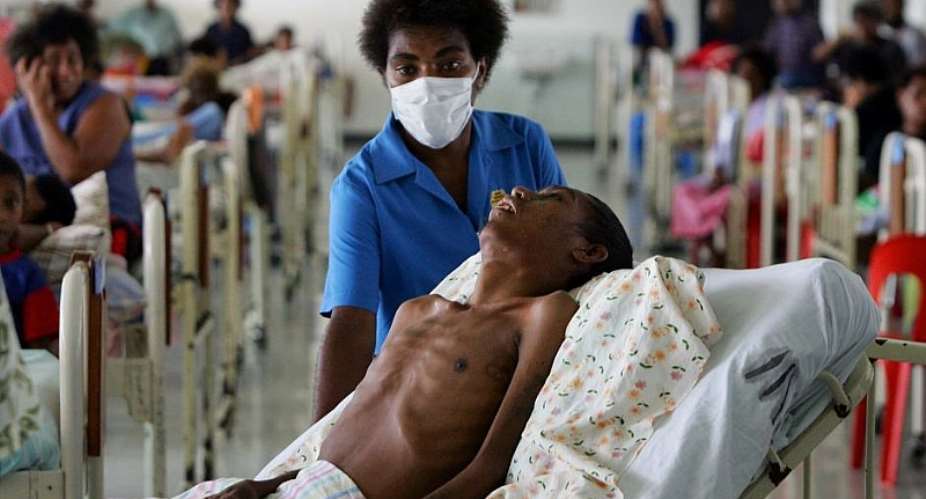The new HIV infections among adolescents is projected to rise by nearly 60 percent (from 250,000 in 2015 to nearly 400,000 annually) by 2030 if progress made so far are not harnessed, the United Nation Children's Fund (UNICEF) has stated.
The UN Agency in a new report called for urgent action to improve HIV prevention and treatment for young people
“The world has made tremendous progress in the global effort to end AIDS, but the fight is far from over – especially for children and adolescents,” UNICEF Executive Director Anthony Lake said.
Every two minutes, another adolescent – most likely a girl – will be infected with HIV. If we want to end AIDS, we need to recapture the urgency this issue deserves – and redouble our efforts to reach every child and every adolescent.”
The Government of Ghana and the Ghana AIDS Commission estimated the number of adults and children living with HIV as of 2015 at 275,000 and prevalence at two percent.
“The toll of HIV and AIDS continues to be harsh despite the progress, It's crucial for Ghana to stay focused and not to let the growing population disengage in the fight against the virus,” Girmay Haile, Country Director at UNAIDS Ghana, said.
“Children are still dying of AIDS-related causes. They face the highest risk of AIDS-related death compared to all other age groups. The AIDS-response must focus on solutions for this extremely vulnerable population. Preventing new infections, but also starting treatment early are the best ways to end AIDS among the youngest children,” Susan Namondo Ngongi, UNICEF Ghana Country Representative, commented.
Worldwide, AIDS remains a leading cause of death among adolescents, claiming the lives of 41,000 adolescents aged 10-19 in 2015, according to the 7th Stocktaking Report on Children and AIDS: For Every Child: End AIDS.
The report proposes strategies such as investing in innovation, including locally grown solutions, strengthening data collection, ending gender discrimination, including gender-based violence and countering stigma, and prioritising efforts to address adolescents' vulnerabilities by providing combination prevention efforts including pre-exposure prophylaxis, cash transfers and comprehensive sexuality education for accelerating progress in preventing HIV among adolescents and treating those who are already infected.
Globally, there were nearly two million adolescents aged 10 -19 living with HIV in 2015. In sub-Saharan Africa, the region most impacted by HIV, girls accounted for three out of every four new infections among adolescents aged 15-19.
BY Jamila Akweley Okertchiri





 Tuesday’s downpour destroys ceiling of Circuit Court '8' in Accra
Tuesday’s downpour destroys ceiling of Circuit Court '8' in Accra
 SOEs shouldn't compromise on ethical standards, accountability – Akufo-Addo
SOEs shouldn't compromise on ethical standards, accountability – Akufo-Addo
 Father of 2-year-old boy attacked by dog appeals for financial support
Father of 2-year-old boy attacked by dog appeals for financial support
 Jubilee House National Security Operative allegedly swindles businessman over sa...
Jubilee House National Security Operative allegedly swindles businessman over sa...
 Nobody can order dumsor timetable except Energy Minister – Osafo-Maafo
Nobody can order dumsor timetable except Energy Minister – Osafo-Maafo
 Mahama wishes National Chief Imam as he clock 105 years today
Mahama wishes National Chief Imam as he clock 105 years today
 J.B.Danquah Adu’s murder trial: Case adjourned to April 29
J.B.Danquah Adu’s murder trial: Case adjourned to April 29
 High Court issues arrest warrant for former MASLOC Boss
High Court issues arrest warrant for former MASLOC Boss
 Align academic curriculum with industry needs — Stanbic Bank Ghana CEO advocates
Align academic curriculum with industry needs — Stanbic Bank Ghana CEO advocates
 Election 2024: We'll declare the results and let Ghanaians know we've won - Manh...
Election 2024: We'll declare the results and let Ghanaians know we've won - Manh...
